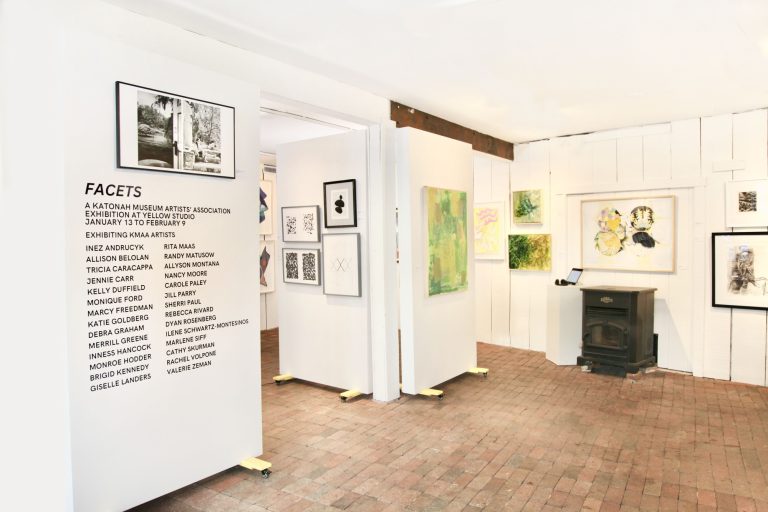Stories of Syria’s Textiles: Art and Heritage Across Two Millennia
Stories of Syria’s Textiles: Art and Heritage Across Two Millennia, on view through Jan. 28, 2024 at the Katonah Museum of Art, illuminates the important role that textile production has played in Syrian culture from antiquity to the present. The objects in the show, which include textile fragments, men and women’s clothing, limestone relief sculptures and a series of contemporary photographs related to silk production, draw a thread across time.
“I wanted to give people the opportunity to engage with Syrian art, culture and heritage in a way we don’t typically do in the U.S.,” says curator Blair Fowlkes Childs, an adjunct professor at Columbia University and New York University’s Institute of Fine Arts. “There’s conflict in Syria at the moment, and so much heritage is disappearing.”
Visitors can gaze upon six textile fragments that were made over 1,800 years ago and unearthed at the archeological site Dura-Europos, a spot where ancient cultures overlapped. The fragments may be small—they range in size from 9 x 12 inches to a mere 2 x 2¼ inches—but they fill the imagination.

Found during an excavation conducted by Yale University and the French Academy of Inscriptions and Letters in the 1930s, these fabrics are part of a trove of more than 12,000 artifacts now in the collection of the Yale University Art Gallery, one of seven U.S. museums lending work to the show. Others include the Metropolitan Museum of Art, the Philadelphia Museum of Art, the Museum of International Folk Art in Santa Fe and the Cleveland Museum of Art.
One of the textile fragments depicts rosettes floating on a green background, its petals shaded from yellow to red. A sliver of an orange border peeks in at lower-right. Fowlkes Childs believes the fragment was part of a luxury household furnishing.
Stories of Syria’s Textiles also includes clothing from the late 19th and early 20th century. A woman’s cotton and silk coat, probably from northern Syria, is decorated with elaborate, colorful embroidery. Fowlkes Childs calls it one of her favorite pieces in the show. “To see that kind of embroidery that we have so little access to is just amazing,” she says.
Exhibited photographs of contemporary silk production were taken in 2009 by Hany Hawasly when he worked with cultural heritage specialist Maya Alkateb-Chami. One image shows a woman in her home dropping fresh mulberry leaves onto a long rug covered in white silkworms—mulberry leaves are a silkworm’s favorite food. “It was surprisingly loud, with the synchronous munching of over a thousand small creatures,” recalled Alkateb-Chami, now a Ph.D. candidate at Harvard University, in a catalog essay.

Simultaneously on view in the Katonah Museum’s Pollack Family Learning Center is Syrian-American artist Rhonda Khalifeh’s Immortal Stitch installation. Khalifeh uses Aghabani tablecloths (a traditional Syrian embroidered textile) and hand-dyed silk and wool in her fabric constructions.
On Oct. 21 the museum will present a free afternoon concert of Syrian music in its outdoor sculpture garden, co-organized with ArtsWeschester. An interactive presentation on Syrian musical heritage and preservation with the Syrian Music Preservation Initiative will be followed by a performance by chamber music ensemble Takht Al-Nagham.
Other museum events related to the exhibitions include an educator’s tour, an indigo dyeing workshop for adults led by Khalifeh, and a series of virtual panel discussions on Syrian textiles.
Photo credit:
Textile with rosettes, from Dura-Europos, ca. 200–256. Wool; weft-faced tapestry weave, 9 × 121/2 in. (22.9 × 31.8 cm). New Haven, Yale University Art Gallery, Yale-French Excavations at Dura-Europos. Photo: Courtesy of Yale University Art Gallery
Woman’s cape, from Aleppo or Damascus, late 19th–early 20th century. Silk, cotton, wool, metal-wrapped thread, metal, and paper; satin weave; plain weave; braided; felt, 56 × 106 in. (142.2 × 269.2 cm). New York, the Metropolitan Museum of Art, Purchase, Gifts in memory of Paul M. Ettesvold, and Judith and Gerson Leiber Fund, 1994. Photo: Courtesy of the Metropolitan Museum of Art / Art Resource, N.Y. © The Metropolitan Museum of Art
Scarf, from Aleppo or Damascus, ca. 1850–88. Silk plain weave with tapestry-woven weft patterning, silk knotted edging, and braided fringe ending in tassels, 62 1/2 × 40 3/4 in. (158.8 × 103.5 cm). Philadelphia Museum of Art, the Bloomfield Moore Collection, 1882. Photo: Courtesy of the Philadelphia Museum of Art
About Michelle Falkenstein
Michelle Falkenstein writes about culture, food and travel. Publications include The New York Times, Journal News, Albany Times Union, ARTnews Magazine and (201) Magazine







